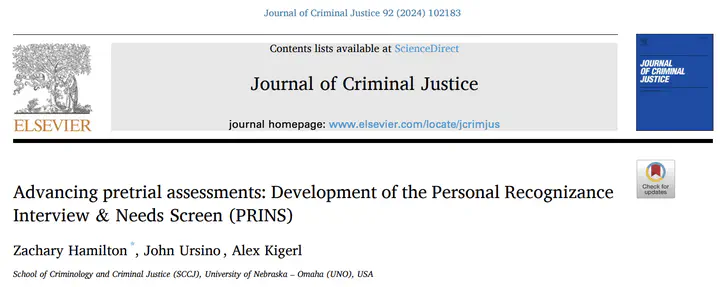Advancing pretrial assessments: Development of the Personal Recognizance Interview & Needs Screen (PRINS)

Abstract
Used to reduce detention, bail/bond, and jail, pretrial risk assessments (PRAs) applications have expanded in the last decade. Yet, many PRAs are created with a unique population, adopted ‘off-the-shelf’ in a new location, reducing the tool’s accuracy and functionality. Further, many PRAs are created with criminal history indicators, increasing concerns of prediction bias. The current study described the development of the Personal Recognizance Interview & Needs Screen (PRINS). Using a multistage development process and large sample (N = 28,147) of defendants, we created a tool that combines static and dynamic indicators, gender-responsive modeling, in the prediction of seven outcomes. Findings indicate exceptional accuracy of the PRINS, with relative prediction parity across gender and race/ethnicity sub-groups. Further, compared to the Virginia Pretrial Risk Assessment Instrument, Ohio Risk Assessment System – Pretrial Assessment Tool, and the Public Safety Assessment, we identify greater accuracy via the PRINS and substantial enhancements for higher risk, females, and defendants of color. We demonstrate the advantages of developing PRAs with dynamic items and incorporating indicators important to judges and stakeholders, while using data gathered locally. Adopting tools with these innovations will improve accuracy, reduce bias, create greater buy-in and, in turn, reduce the use of bond/bail and detention.